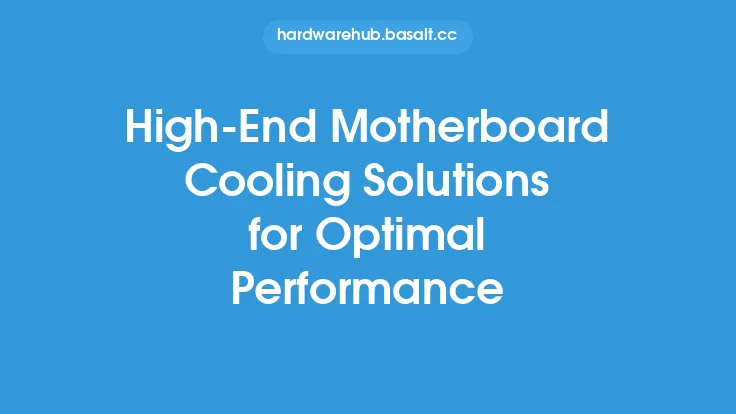When it comes to building a high-performance computer, the motherboard is one of the most critical components. It serves as the main circuit board that connects all the hardware components together, allowing them to communicate and function seamlessly. A high-end motherboard is designed to provide the best possible performance, features, and durability, making it an essential investment for enthusiasts, gamers, and content creators. In this article, we will delve into the key aspects that make a high-end motherboard, exploring the technical details and features that set them apart from their mid-range and budget counterparts.
Introduction to High-End Motherboard Design
High-end motherboards are designed with a focus on performance, quality, and attention to detail. They typically feature a more robust power delivery system, high-quality capacitors, and a well-designed PCB (Printed Circuit Board) layout. The PCB is the backbone of the motherboard, providing the foundation for all the components to be connected. High-end motherboards often feature a multi-layer PCB, which allows for better signal integrity, reduced electromagnetic interference (EMI), and improved heat dissipation. The use of high-quality materials, such as gold-plated connectors and stainless steel screws, also contributes to the overall durability and reliability of the motherboard.
CPU and Chipset
The CPU (Central Processing Unit) and chipset are the brain and nervous system of the computer, respectively. High-end motherboards often support the latest CPU architectures, such as Intel Core i9 or AMD Ryzen 9, and feature a high-end chipset that provides a wide range of features and connectivity options. The chipset is responsible for managing the flow of data between the CPU, memory, and peripherals, and high-end motherboards often feature a chipset with advanced features such as PCIe 4.0, USB 3.2 Gen 2, and SATA 6Gb/s. The CPU socket is also designed to provide optimal cooling and power delivery, with features such as a robust mounting system and high-quality thermal interface material.
Memory and Storage
High-end motherboards often feature multiple memory slots, allowing users to install large amounts of RAM (Random Access Memory) and take advantage of advanced memory technologies such as DDR4 or DDR5. The memory slots are typically designed with a focus on signal integrity, featuring features such as gold-plated contacts and shielding to reduce EMI. In terms of storage, high-end motherboards often feature multiple SATA ports, M.2 slots, and PCIe NVMe slots, providing users with a wide range of options for installing high-performance storage devices. The storage interfaces are also designed to provide optimal performance, with features such as PCIe 4.0 and SATA 6Gb/s.
Expansion and Connectivity
High-end motherboards often feature a wide range of expansion and connectivity options, including PCIe slots, USB ports, and audio jacks. The PCIe slots are designed to provide optimal performance for graphics cards and other expansion cards, featuring features such as PCIe 4.0 and steel reinforcement to reduce sag and improve durability. The USB ports are also designed to provide optimal performance, featuring features such as USB 3.2 Gen 2 and USB Power Delivery (PD). The audio jacks are designed to provide high-quality audio, featuring features such as gold-plated contacts and shielding to reduce EMI.
Power Delivery and Cooling
High-end motherboards often feature a robust power delivery system, designed to provide optimal power to the CPU, memory, and peripherals. The power delivery system typically features a high-quality voltage regulator module (VRM), which is designed to provide clean and efficient power to the CPU. The VRM is often cooled by a heat sink or fan, which helps to improve its performance and reliability. In terms of cooling, high-end motherboards often feature advanced cooling solutions, such as heat pipes, heat sinks, and fans. These cooling solutions are designed to provide optimal cooling for the CPU, chipset, and other components, helping to improve their performance and reliability.
Quality and Durability
High-end motherboards are designed to provide optimal quality and durability, featuring high-quality components and a robust design. The components are often selected for their high quality and reliability, featuring features such as gold-plated contacts, stainless steel screws, and high-quality capacitors. The design is also focused on providing optimal durability, featuring features such as a robust PCB, steel reinforcement, and advanced cooling solutions. The motherboard is also designed to provide optimal protection against EMI, featuring features such as shielding, filtering, and grounding. Overall, high-end motherboards are designed to provide the best possible performance, features, and durability, making them an essential investment for enthusiasts, gamers, and content creators.





